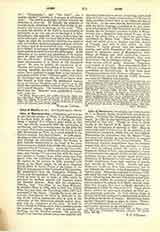

John of Montecorvino, a Franciscan and founder of the Catholic mission in China, b. at Montecorvino in Southern Italy, in 1246; d. at Peking, in 1328. Being a member of a religious order which at that time was chiefly concerned with the conversion of unbelievers, and was commissioned by the Holy See to preach Christianity especially to the Asiatic hordes then threatening the West, he devoted himself to the Eastern missions, first that of Persia. In 1286 Argun, the khan or ruler of this kingdom, sent a request to the pope through the Nestorian bishop, Bar Sauma, to send Catholic missionaries to the Court of the great Chinese emperor, Kublai Khan (1260-94), who was well disposed towards Christianity. About that time John of Montecorvino came to Rome with similar promising news, and Nicholas IV entrusted him with the important mission to Farther China, where about this time Marco Polo, the celebrated traveller, still lingered. He started on his journey in 1289, provided with letters to the Khan Argun, to the great Emperor Kublai Khan, to Kaidu, Prince of the Tatars, to the King of Armenia and to the Patriarch of the Jacobites. His companions were the Dominican Nicholas of Pistoia and the merchant Peter of Lucalongo. From Persia he went by sea to India, in 1291, where he preached for thirteen months and baptized about one hundred persons. Here also his companion, Nicholas, died. Travelling by sea from Meliapur, he reached China in 1294, only to find that Kublai Khan had just died, and Timurleng (1294-1307) had succeeded to the throne. Though the latter did not embrace Christianity, he threw no obstacles in the way of the zealous missionary, who, in spite of the opposition of the Nestorians already settled there, soon won the confidence of the ruler. In 1299 he built a church at Peking and in 1305 a second opposite the imperial palace, together with workshops and dwellings for two hundred persons. He gradually bought from heathen parents about one hundred and fifty boys, from seven to eleven years of age, instructed them in Latin and Greek, wrote psalms and hymns for them, and then trained them to serve Mass and sing in the choir. At the same time he familiarized himself with the native language, preached in it, and translated into Chinese the New Testament and the Psalms. Among the six thousand converts of John of Montecorvino was a Nestorian king named George, of the race of the priest John, a vassal of the great khan, mentioned by Marco Polo. After he had worked alone for eleven years, a German associate, Arnold of Cologne, was sent to him (1304). In 1307 Clement V, highly pleased with the missionary’s success, sent seven Franciscans who were commissioned to consecrate John of Montecorvino Archbishop of Peking and chief archbishop (summus archiepiscopus) of all those countries; they were themselves to be his suffragan bishops. Only three of these envoys arrived safely: Gerardus, Peregrinus, and Andrew of Perugia. They consecrated John in 1308 and succeeded each other in the See of Zaiton, established by Montecorvino. In 1312 three more Franciscans arrived from Rome as suffragans. John of Montecorvino departed this life (1328) honored as a saint by Christian and heathen.
OTTO HARTIG

